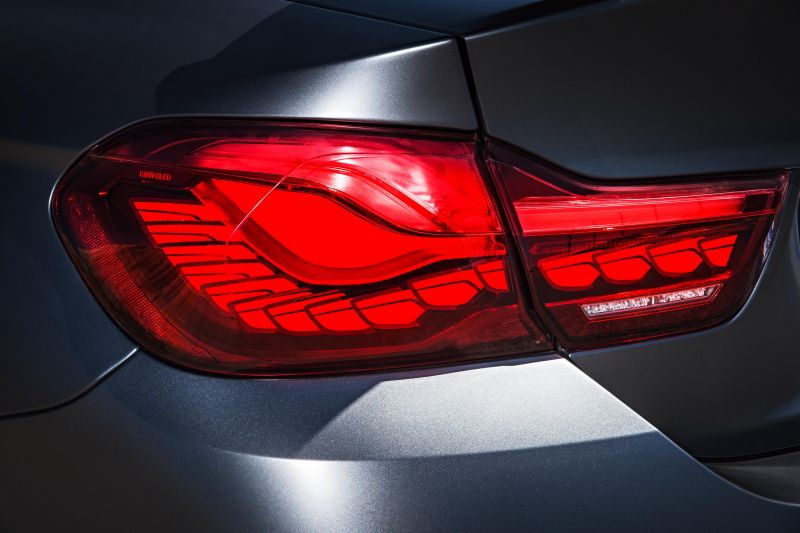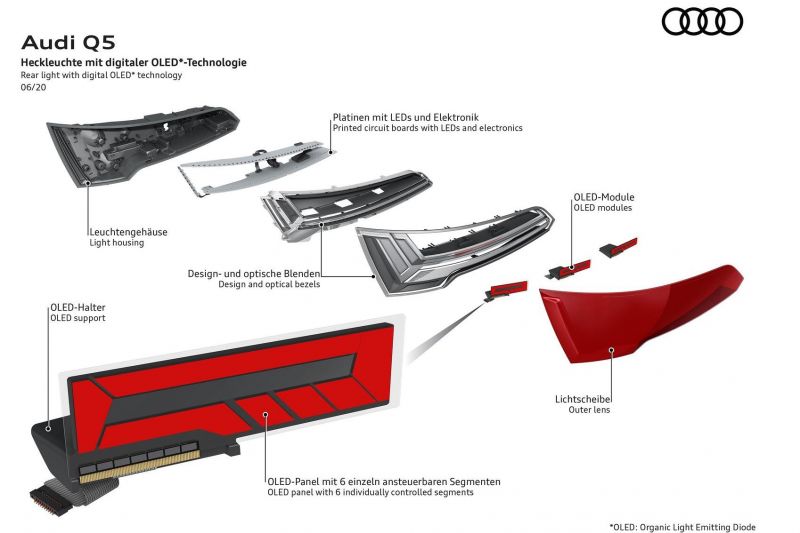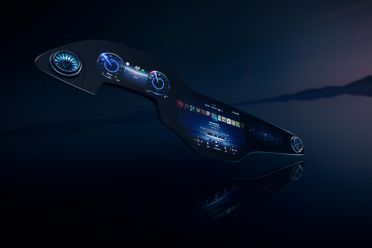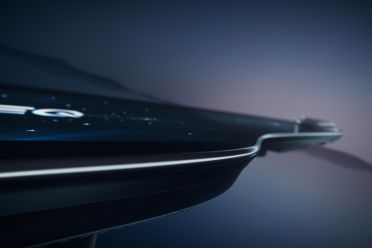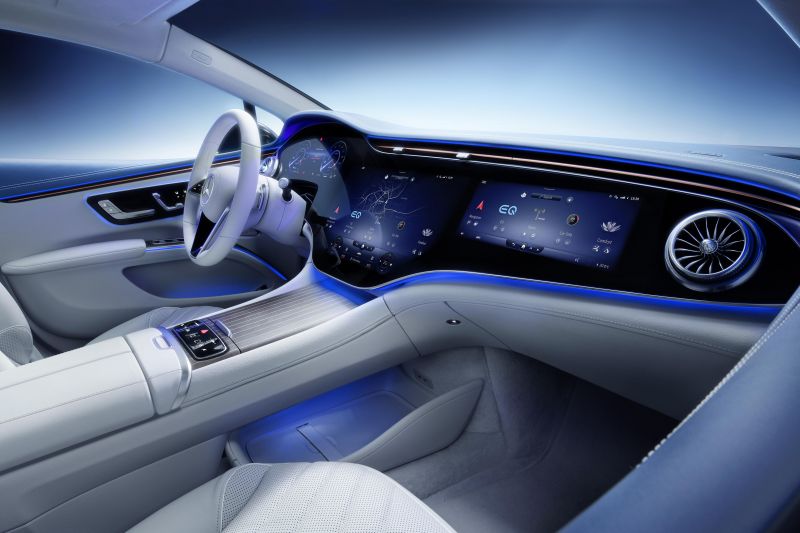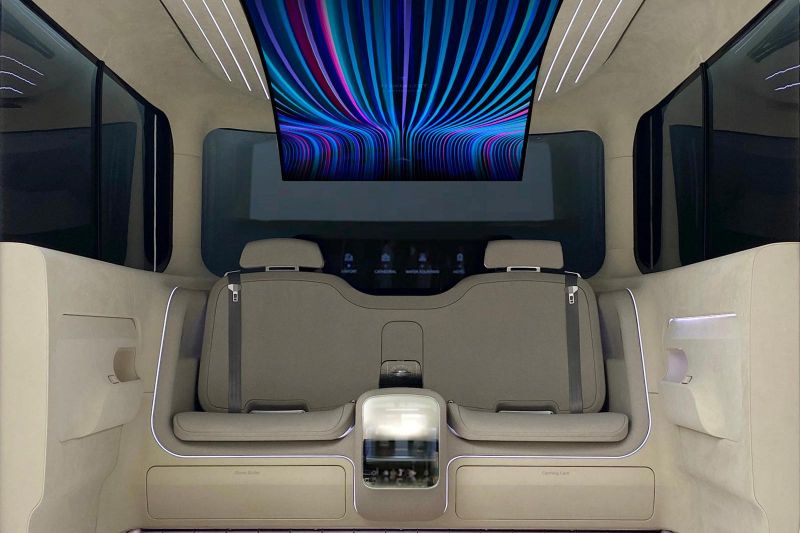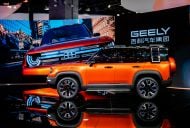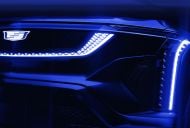OLED has been a much bandied about acronym of late, with the technology being used in high-end TVs, smartphone displays, and even gaming consoles like the latest Nintendo Switch.
Variants of the above that are equipped with OLED displays are generally among the highest quality and most expensive in their class.
The same basic principle also applies to the use of OLED technology in the automotive industry, as it currently appears largely in higher-end models.
As with other innovations, this may change over time as it becomes cheaper to manufacture.
What is OLED and how does it work?
OLED is an acronym that stands for Organic Light Emitting Diode. As hinted at by the name, the basic way that an OLED works is similar to a conventional LED (Light Emitting Diode).
An LED produces light when an electric current is passed between two layers of compound semiconductor material (such as gallium phosphide). One of these layers will contain a surplus in electrons, and the other layer a shortage (known as a layer with ‘holes’). These layers are joined together, with the area at which they meet known as a ‘p-n junction.’
As electrons flow across the junction from the surplus layer into the ‘hole’ layer, they release their extra energy in the form of light.
An OLED works in the same manner, except the compound semiconductor material is replaced by an organic, carbon-based material.
The uses and benefits of OLED technology
Today, there are two primary uses of OLED technology in cars: in tail lights, in lieu of conventional LEDs; and in infotainment systems and digital instrument clusters.
In the tail-light arena, Audi and BMW were the first to debut OLED technology, with both brands introducing it on performance models such as the TT RS (as an option) and the limited-run, previous generation M4 GTS respectively. Audi currently also offers OLED tail-lights on other models such as the Q5 SUV.
Compared to LED technology for tail lights, Audi claims that OLED offers a much more uniform lighting characteristic, without any noticeable dark or bright areas or spots. Additionally, OLED technology for tail lights doesn’t require any of the additional componentry typical of conventional LEDs, such as reflectors or optical fibres.
This means that an OLED lighting assembly is substantially thinner than its standard LED counterpart, thereby giving designers much more freedom to create interesting lighting designs.
Another benefit of OLED lighting technology relates to its controllability. The latest ‘digital OLED’ tail-lights in the new Q5, for example, are split into 18 segments which can each be individually controlled. This has allowed engineers and designers to link the light signature to the drive mode – so that in dynamic mode, for example, the tail lamps use a different lighting style compared to other modes.
OLED technology also facilitates an enhanced version of tail light reflectors. Traditionally, reflectors simply reflect back the beam of an approaching car. The latest OLED-equipped Q5 also includes rear-mounted proximity sensors linked to the tail lights. If another vehicle is less than two metres behind, the entire lighting assembly is lit to provide greater visibility, before returning to the driver mode-based lighting signature.
Displays are a more widespread use case for OLED technology, and this is another application that has been transplanted into the automotive industry. Mercedes-Benz is arguably a pioneer here with the new MBUX Hyperscreen, available on recently launched EQS and EQE models. This features a large, wraparound glass panel under which sit three displays: the digital instrument cluster, and separate OLED central and front passenger infotainment screens.
OLED displays feature self-lit pixels that can turn themselves off when not in use, creating a much higher contrast ratio than traditional LED displays. The central and front passenger screens take full advantage of this to create a seamless, highly integrated appearance with the surrounding glass.
Image retention is a potential issue with OLED displays, whereby if a particular image is shown for too long, it risks being ‘burned-in’ to the screen even if something else is shown. Mercedes has attempted to counter this issue through various methods, including subtly rotating the image to ensure that no particular pixel is displaying exactly the same part of the picture for an extended period of time.
Hyundai is another early adopter of OLED technology. In certain markets, the new Ioniq 5 features a digital rear-view mirror that incorporates a Samsung OLED display.
MORE: Driver-assist cameras: a closer look
Future applications of OLED technology in cars
It’s likely that increasingly advanced OLED technologies will continue to play a part in both external lighting design and in infotainment displays inside the car.
Audi’s 2012 Swarm Concept is one example of exterior OLED lighting technology taken to its extreme. Rather than having distinct, traditional light clusters, the entire rear of the car is one giant OLED display, enabling fluid animations such as moving turn signals, or more obvious warnings of road hazards ahead.
In the near future, it’s more likely that OLED tail-lights will feature greater segmentation (as described above), to the extent that the light signature could change into a warning triangle or similar if a hazard is detected ahead.
As cars become increasingly digital, ever larger infotainment and passenger entertainment screens will become the norm. The slim nature of OLED displays coupled with their flexibility to be curved or bent into various forms, makes them ideal for car interiors.
One example of this future vision is Hyundai’s Ioniq Concept Cabin. This features an overhead, ceiling-mounted 77 inch curved OLED screen suitable for passengers to watch movies and other entertainment.





